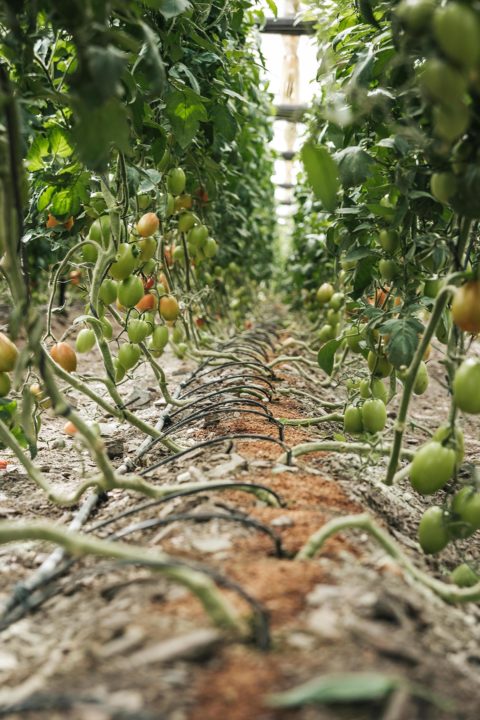How RFID Technology Can Help With Plant Cart Tracking

With RFID technology installed in a shipping truck and RFID tags affixed to the shipping carts, it’s possible to track the location of carts, even when they’re in-transit. Photo by Raco Industries.
For years, radio-frequency identification (RFID) technology has been mostly used by the retail industry for the enormous benefits it brings to inventory tracking and management. For those who have ever had to scan dozens of individual barcodes in one sitting, the ability to instantly scan an entire skid full of incoming product is a big advantage.
RFID works incredibly well for these types of uses, but its drawbacks have historically kept it from being more prominent in other applications, especially when it comes to tracking shipping carts and racks in nurseries and greenhouses. One of the greatest challenges for these companies has been overcoming the costs of applying the technology in a reliable way (which makes sense when one considers just how many carts would need to be tagged in any major facility), not to mention their lack of durability and vulnerability to water, dirt, and metal.
However, as expertise in the field has grown, RFID technology has developed into something much more than it once was. Now, it is safe to say that RFID is no longer just for retail. The technology is less costly than ever, more reliable, and has overcome the environmental factors that have hindered implementation in the past.
Tracking Cart Data in Transit
The biggest difficulties of tracking carts come from the fact that, usually, there are thousands of them, which makes them difficult to manage. Once the carts are loaded with product and shipped out, it’s almost impossible to get an update on their location and reliable proof of delivery, or to perform an audit on lost carts. Once the truck leaves, you’re basically blind until it comes back. The fundamental goal of cart tracking, therefore, is to help you determine where the carts are, who had them last, what truck they were placed in, and ultimately, where they ended up.
RFID technology can give you this information by allowing you to collect data while the shipment is still in transit. Here’s how it works: RFID tags are affixed to the carts, which are then loaded into a shipping truck equipped with GPS-enabled RFID readers. Every few minutes, these readers will scan each cart in the truck simultaneously. When this happens, the data is wirelessly sent to a back-end software platform that automatically logs each cart’s GPS coordinates along with a time and date stamp. When a cart is dropped off and stops appearing in the scan logs, finding it is simply a matter of comparing its last known location and timestamp with its closest delivery report.
Overcoming Environmental Factors
Past iterations of RFID tags — the ones most people are familiar with — have been thin, and not particularly durable, sticker-like objects that you’d sooner find stuck to the inside of a DVD case than attached to a piece of heavy equipment. They were easily degraded by dirt and water, and the already short-range radio waves they emitted would be blocked and distorted by metal, making them a less-than-ideal option for implementing a cart-tracking solution in a greenhouse or nursery, where these hindrances are unavoidable.
Modern-day RFID tags are a different story. They are more durable, last longer, and are resistant to water and dirt, making them far more useful for a nursery or greenhouse environment. Just as important though, they emit stronger, further-reaching radio signals that won’t be rendered useless when attached to a metal cart. Some early attempts at RFID cart tracking involved the use of special mounts or flags that suspended the tag off the cart just enough to eliminate metal interference, but they would leave the tag insecurely fastened and would need to be delicately worked around. Today, ruggedized RFID tags are bolted directly on to a metal cart without any loss in performance, allowing them to be read more easily and consistently than ever.
Lowering the Cost of Ownership
As certain technologies advance, they generally become cheaper to own, and RFID is no different. The cost of the tags themselves has lowered, of course, but that is just the beginning. A well-implemented RFID system will not only cut costs, but eventually give you a return on your investment.
Let’s say a facility loses track of 100 carts per year. If the carts cost $400 each, then the result is a $40,000 annual loss. An RFID solution that finds and retrieves those lost carts nullifies that loss. Alsoremember: Because carts are usually not retrieved immediately after a shipment, it is not uncommon for a facility to keep an inflated inventory of carts to account for predicted losses. If these losses are eliminated, then the need to maintain this inflated inventory is eliminated, too, saving money overall.
Finally, because of the massive increase in the average lifespan of an RFID tag, they barely ever need to be replaced. Instead, the tags now last through the entire life of the cart. This eliminates not only the monetary investment of purchasing new tags, but also the time investment required to re-tag thousands of carts.








